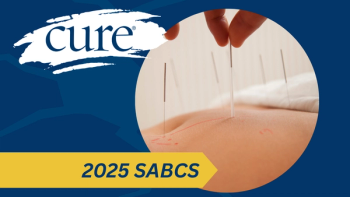
One Giant Leap for a Cancer Cure
In 1969, when Neil Armstrong took the famous first steps on the moon and said those memorable words, I remember watching in amazement. We had done the seemingly impossible.
For years, people have felt that way about cancer — it’s too elusive, too complex. In short, impossible to defeat. But the progress we made – like our progress in the space program – has been enormous, unlocking information that has transformed cancer detection and care in a matter of just a few decades. Susan G. Komen is proud to have played a role in these improvements, bringing breast cancer out of stigma and shame and to the forefront of medical research, public policy and community programs.
Yet for all the progress and promise, too many women and men are still dying of cancer. Breast cancer alone is expected to claim more than half a million lives this year worldwide and 40,000 in the U.S. We need a focused, nationwide strategy to tackle this critical problem.
Vice President Joe Biden recently called for a “moonshot” for a cancer cure, which gave us a challenge with a singular goal: gaining a decade’s worth of progress in five years.
Can it be done? That remains to be seen, but we’re swinging for the fences. While some may be critical of the approach, the promise is undeniable: After years of declining federal investment, our country is making a determined (and overdue) national effort to take on cancer. It’s one small step for mankind with more giant leaps necessary.
This disease — which has taken so much from so many – will require the same discipline and focus that changed history once already. Another moonshot. Susan G. Komen is taking aim at the areas that can make the biggest impact and save the most lives in the shortest period of time. And our calls to action are reminiscent of the mission to the moon itself:
1) Focus on the Mission: Komen has always been, and will always be, committed to finding the cures for breast cancer. We have funded more breast cancer research than any other organization outside of the U.S. government. We have invested in a broad range of the most promising breast cancer research; we’ve made it our priority to fund the next generation of breast cancer investigators (whose research careers are threatened by lack of funding), and we will continue to invest in innovative research until the day that no one will die of breast cancer.
2) Use the Right Tools: The ongoing debate about when to begin screening for breast cancer continues. But the medical field is moving towards screening decisions based on an individual’s risk, rather than on age alone, especially because mammography remains a dated and imperfect technology. We need increased investment in research to develop better and more accurate risk assessment and screening tools. Komen is leading the way, with exciting findings in just the past few years in molecular breast imaging (MBI) and ultrasound tomography — both of which might offer innovative, low-cost screening options for women with dense breasts. To date, we have invested more than $33 million in pursuit of more precise early detection methods, but still have more to do.
3) Do it for the People and the Future: Advances in treatment only “advance” if the women and men who stand to benefit have access to the latest in cancer care. Today in the U.S., African-American women are more than 40 percent more likely to die of breast cancer than white women, with similar discouraging statistics in other communities of color. A combination of biological, socioeconomic and cultural factors has hindered us from achieving health equity. Thousands of lives could be saved tomorrow if we could overcome this injustice and ensure that people of all races and socioeconomic status have access to high quality care.
Susan G. Komen is going to do what we’ve always done: change the way the world thinks about and treats breast cancer. We’ve laid the foundation for the next giant leap. We’re pooling our resources, collaborating with other experts and shooting for the moon.
Unlike cancer, we can’t be stopped.





